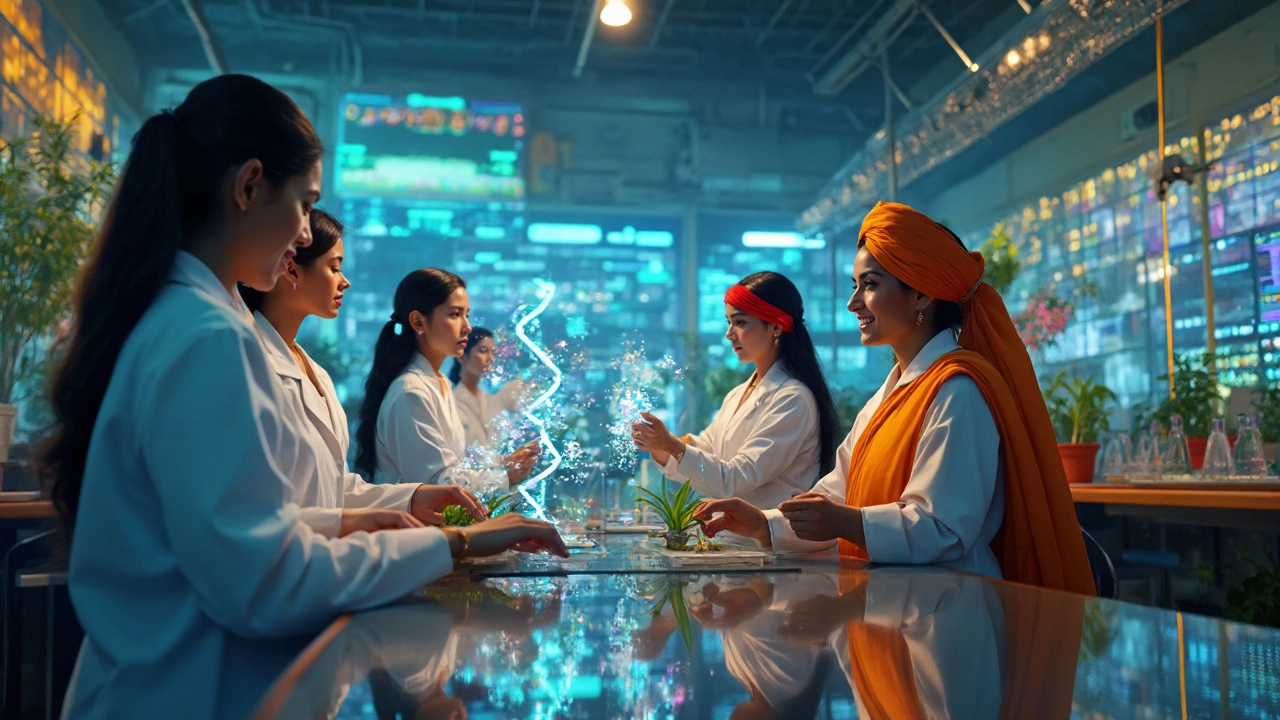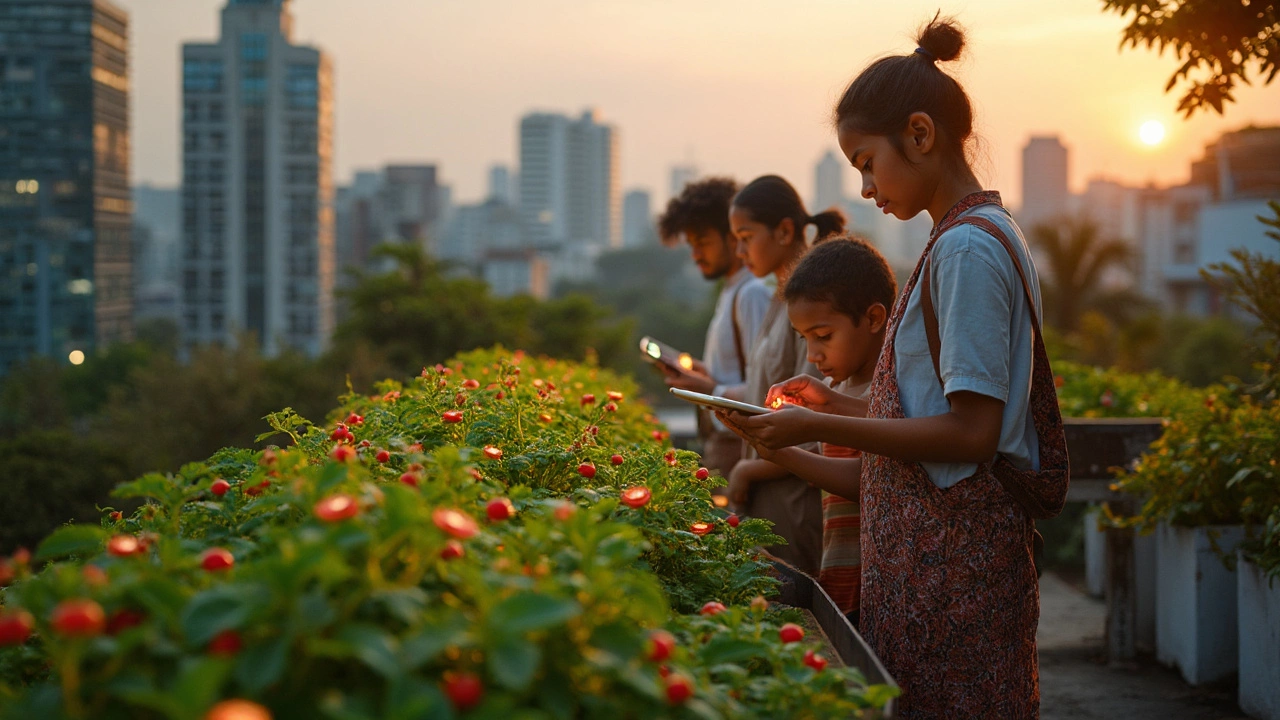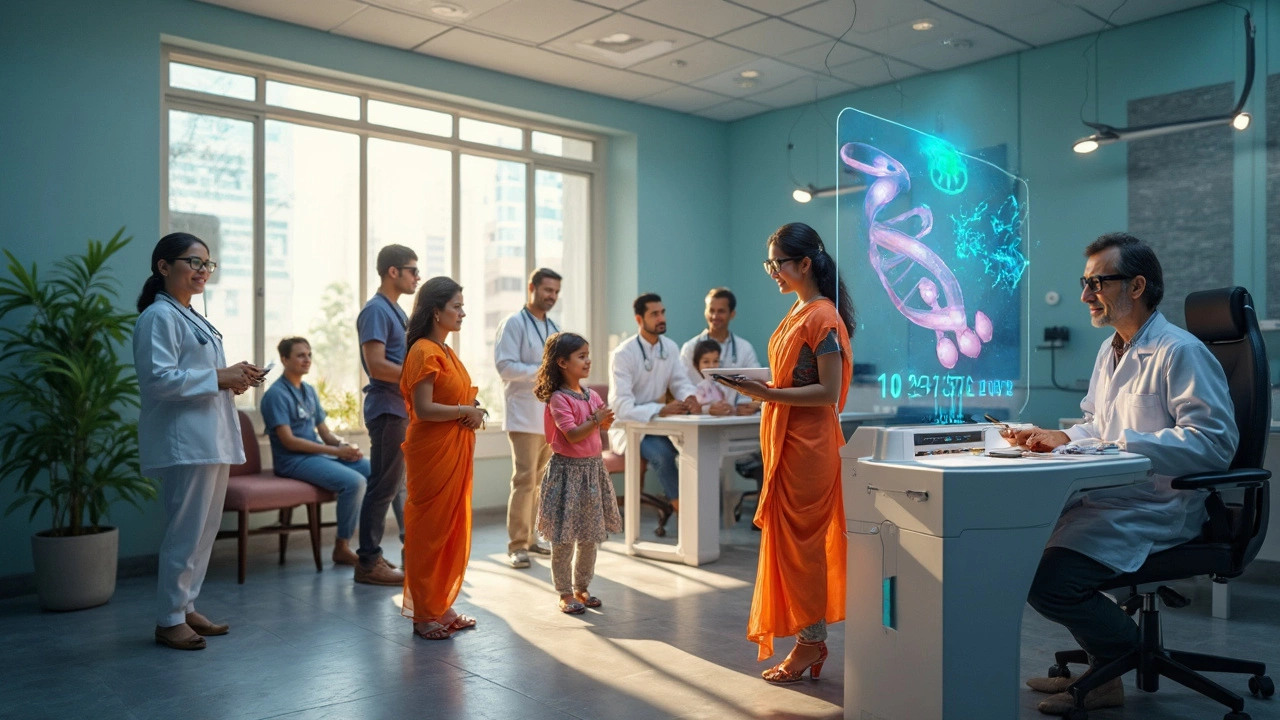Modern Biotechnology Advances: Game-Changers Shaping Today’s World
 May, 28 2025
May, 28 2025
Imagine tweaking a single gene to stop a disease, or growing a real hamburger in a lab without ever touching a cow. Sounds wild, right? That’s not some distant sci-fi dream—it’s happening right now, thanks to the latest biotech breakthroughs.
Tech like CRISPR lets scientists change DNA almost as easily as editing a document on your laptop. This isn’t just for rare diseases or fancy labs, either. Farmers are using gene-edited plants that can handle droughts and pests without extra chemicals. Regular folks, including some who swore off science back in high school, are starting to notice these changes at the grocery store and the doctor’s office.
New biotechnology isn’t just about smarter medicine. It’s about sustainable food, faster testing, and even tackling the huge problem of pollution. Biotech is shaking up industries that seemed locked in old ways for decades. You don’t have to be a scientist to see the impact—chances are, it’s already hit your plate, your hospital, or maybe even your backyard.
- Gene Editing and CRISPR
- Breakthroughs in Synthetic Biology
- Lab-Grown Food and Sustainable Farming
- Revolutionary Diagnostics and Personalized Medicine
- Future Horizons in Biotech
Gene Editing and CRISPR
Gene editing has flipped the science world upside-down, especially with CRISPR. Think of CRISPR as a pair of super-precise scissors that can snip and tweak DNA wherever scientists want. It stands for Clustered Regularly Interspaced Short Palindromic Repeats—a mouthful, but it’s way simpler to use than it sounds.
Since 2012, when CRISPR really hit the scene, labs worldwide have been racing to fix gene problems behind everything from sickle cell anemia to blindness. In 2023, the U.S. approved its first CRISPR-based treatment for sickle cell disease. Real patients saw huge life changes—many stopped needing regular blood transfusions. That’s not just theory, that’s real-life impact happening in hospitals now.
“CRISPR is one of the most significant discoveries in the history of biology. It’s changing the way we think about treating disease,” said Dr. Emmanuelle Charpentier, co-inventor of CRISPR.
But it isn’t just about treating diseases. Farmers are using CRISPR to grow tomatoes that last longer or wheat that survives drought. A 2024 report from the International Service for the Acquisition of Agri-biotech Applications (ISAAA) showed over 70 CRISPR-edited crops in field trials worldwide—everything from mushrooms to corn.
Here’s what makes gene editing and CRISPR especially exciting right now:
- biotechnology advances are super precise—minimal mistakes compared to older methods.
- Costs have dropped fast. What would’ve taken years and big money now happens in weeks.
- Regulations are catching up, with governments in the US, UK, and Japan giving the green light to several gene-edited foods in stores.
Let’s look at some quick numbers:
| Year | CRISPR-based Approvals (Medical/Food) | Estimated Cost (per experiment, USD) |
|---|---|---|
| 2014 | 2 | $10,000+ |
| 2020 | 15 | $500–1,000 |
| 2024 | 30+ | $100–500 |
Gene editing is not some far-off thing you’ll never see. From medical breakthroughs to better food, CRISPR is showing up everywhere, quicker and cheaper than most of us ever thought possible.
Breakthroughs in Synthetic Biology
Synthetic biology isn’t just about mixing stuff in a lab—it’s more like programming biology itself, unlocking some wild possibilities. Experts have figured out how to make bacteria and yeast produce things like medicine, fuel, and even flavors, just by changing their DNA. A classic example: insulin. Before 1982, getting insulin for diabetes mostly meant using pig or cow parts. Now, thanks to synthetic biology, a lot of insulin is pumped out by genetically tweaked bacteria. This approach is safer and cheaper.
One hot area is making eco-friendly stuff without pulling resources from the planet. Scientists have designed microbes that eat waste, like old plastic or corn husks, and spit out things like biodegradable plastics or biofuels. It’s a way to cut down on pollution and keep things moving, literally. Big brands making soda bottles from plant-based materials? They’re leaning on tricks from synthetic biology.
And it goes beyond making useful products. There’s a lot of work around “gene circuits”—these are DNA designs that act like tiny computers in a cell, turning certain genes on or off when the cell senses something. Think about a programmed bacteria that lights up in the presence of toxins, making water testing a breeze.
Check out this table showing a few real results synthetic biology has delivered so far:
| Breakthrough | What Changed | Impact |
|---|---|---|
| Microbe-made Insulin | Using E. coli to make insulin instead of animal glands | Lower costs, fewer allergies, safer supply |
| Bioengineered Artemisinin | Yeast engineered to make malaria drug | More reliable, affordable malaria treatment |
| Plant-Based Plastics | Custom bacteria turning sugars to plastic | Less reliance on oil, cuts plastic waste |
| Scent and Flavor Production | Yeast strains making vanillin and rose scent | Consistent quality, reduced environmental impact |
If you’re in college or thinking about biotech as a job, synthetic biology is exploding with new roles. Companies are hiring folks who know both biology and a bit of coding. Even if you’re not in the field, expect to hear more about these huge shifts as they hit products you use every day.
The best part? Synthetic biology is making products with traits we just can’t get from nature or chemistry alone. This superpower isn’t slowing down, and it’s reshaping everything from medicine cabinets to supply chains.

Lab-Grown Food and Sustainable Farming
Let’s talk about burgers that skip the cow but taste just like the real thing. Lab-grown or “cultivated” meat is made by taking a few animal cells and growing them in special containers, kind of like brewing beer. The result? Actual meat, just no animals needed in a feedlot or slaughterhouse. In 2020, Singapore was the first country to approve lab-grown chicken nuggets for sale. By early 2025, companies in the U.S. and Europe are pushing lab-grown chicken, beef, and even fish through taste tests and limited releases. These products are pricey now but costs keep dropping as tech improves.
This shift could save a ton of resources. Raising livestock for meat uses about one-third of all farmland and is a major source of methane, which fuels climate change. Growing meat in labs can reduce land use by up to 95% and slash water and energy needs too. It doesn't stop at meat—some startups are brewing milk, eggs, and even honey using yeast or fungi, cutting animals out entirely.
Sustainable farming isn’t just about what’s on the plate. Gene editing, especially with CRISPR, lets scientists give crops special traits, not by mixing in genes from other species, but by tweaking their own DNA. This helps create wheat that resists deadly fungi, tomatoes that don’t bruise, or bananas safe from new diseases. Farmers can grow more food using fewer chemicals, and crops survive droughts and pests much better.
Here’s how these advances are making sustainable farming possible:
- Reducing pesticide use, so less runoff ends up in rivers and lakes
- Saving water with drought-tough crops that survive longer dry spells
- Cutting food waste thanks to foods that stay fresh longer
- Using less land, so more forests and wild spaces stay untouched
If you like the idea of better food that’s easier on the planet, keep an eye on the future grocery aisle. The stuff you see on science shows today might be what’s for dinner tomorrow.
Revolutionary Diagnostics and Personalized Medicine
Until recently, visiting a doctor for answers about your health often meant waiting days or weeks just to find out what’s wrong. Now, thanks to advances in biotechnology, getting a quick, spot-on diagnosis is more possible than ever. Take rapid genetic sequencing—doctors can use it to identify rare conditions in newborns within 24 to 48 hours. That speed can literally save lives, especially for treatable conditions.
Wearable devices have also raised the bar. Modern smartwatches can monitor everything from your heart rhythm to blood oxygen levels, and flag issues long before you notice symptoms. It’s not just for athletes—people with chronic illnesses are catching problems sooner, avoiding hospital visits, and even tweaking medications alongside their doctors.
The real kicker is personalized medicine. Instead of one-size-fits-all, treatments are now tuned to your own DNA. For example, cancer drugs are chosen based on the genetic signature of your tumor, not just where it started in your body. This boosts results and reduces side effects—a win on both ends.
- Genetic risk tests can spot chances of diseases like breast cancer or heart disease years before any symptoms appear.
- Pharmacogenomics lets doctors pick the medicine most likely to work for your genetic profile, skipping the trial-and-error guesswork.
- Biotech startups are using advanced blood tests to catch cancers earlier than ever, sometimes before any signs show up at all.
Check out these numbers for a sense of just how much things have changed:
| Biotechnology Advance | Impact | Recent Data (2024) |
|---|---|---|
| Rapid DNA Sequencing | Identify rare diseases in newborns fast | Over 10,000 infants diagnosed early in the US last year |
| Wearable Diagnostics | Spot early signs of heart problems, sleep issues | 1 in 5 US adults use health wearables regularly |
| Personalized Cancer Treatment | Treatments matched to tumor DNA | 42% increase in personalized therapies since 2020 |
All of these advances in biotechnology advances are making healthcare faster, smarter, and more personal. Want an action tip? If a health condition runs in your family, ask your doctor about genetic screening. You might be able to head off future problems with simple changes or early treatment.

Future Horizons in Biotech
The next wave of biotech isn’t slowing down. We’re looking at wild stuff that could change how we live—from how we heal to how we power our homes. One big thing catching momentum is biodegradable plastics made by bacteria. Instead of plastics hanging around in landfills forever, these actually break down and disappear in months.
Then there’s gene therapy, which is starting to move beyond rare genetic problems. Researchers are running trials using gene editing to tackle things like heart failure and even some cancers. There’s early buzz showing that some patients have seen their symptoms disappear for years after a single treatment. It’s not perfect yet, but it’s speeding up fast.
Another area to watch? Personalized nutrition. Companies have started using your own DNA to give advice on what you should eat for better health. Think fewer guesswork diets and more snacks tailored for your body. Biotechnology advances are making it possible to spot disease risks before you even get sick, and then customize vitamins and medicine just for you.
Here’s a look at where things are headed in the next few years:
- Portable, pocket-sized DNA sequencers for real-time health checks
- Microbes engineered to clean up oil spills way faster than current tools
- Biohybrid robots that mix living cells with machines for surgery or cleanup jobs
- CRISPR tech in agriculture to create crops packing more nutrition with less land
To get a snapshot of just how fast this field is moving, check out these numbers:
| Area | 2023 Global Market Value (USD) | Expected Growth by 2030 |
|---|---|---|
| Gene Editing | $5.3 billion | $19.1 billion |
| Synthetic Biology | $11 billion | $36.4 billion |
| Lab-Grown Food | $0.8 billion | $11.5 billion |
Big picture: as these ideas become reality, we’ll see new jobs, new industries, and some pretty big changes to our daily routines and what we eat, drink, and even how we stay healthy. It’s worth keeping tabs because these breakthroughs are coming sooner than you might think.